Hiking in Patagonia - Chile and Argentina
February 2-18, 2013
Part One - Chile
Page Three - Driving to Torres del Paine National Park
The tour group of 14 plus our driver, tour leader Sergio from Mexico, and Chilean local guide
Tomas drove from Punta Arenas to Torres del Paine
National Park.
Patagonia is a distinct
geographical region at the base of South America spanning the lower sections of Argentina
and Chile.
On the Chilean side, it starts in the Araucanía region extending down
to the extreme southern tip of the country.
On the Argentine side, it begins in the province of
Rio Negro
and carries on all the way to Tierra Del Fuego. Long before humans arrived
on the continent, glaciers chiseled and carved out rugged landscapes here.
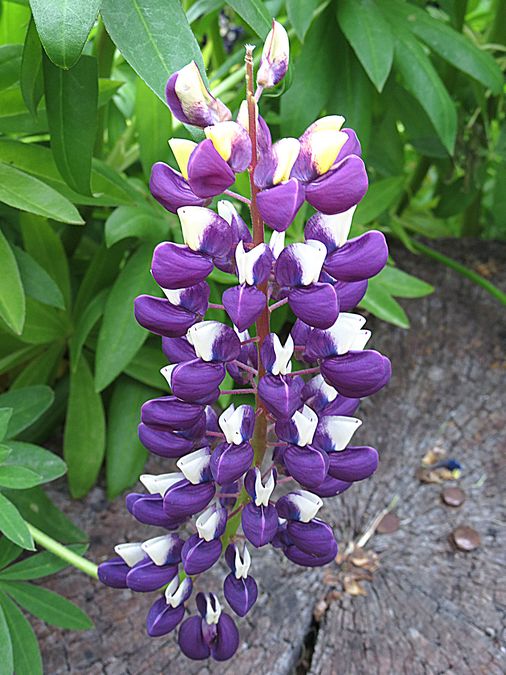
Lupine at a lunch stop on the way to Torres Del Paine N.P.
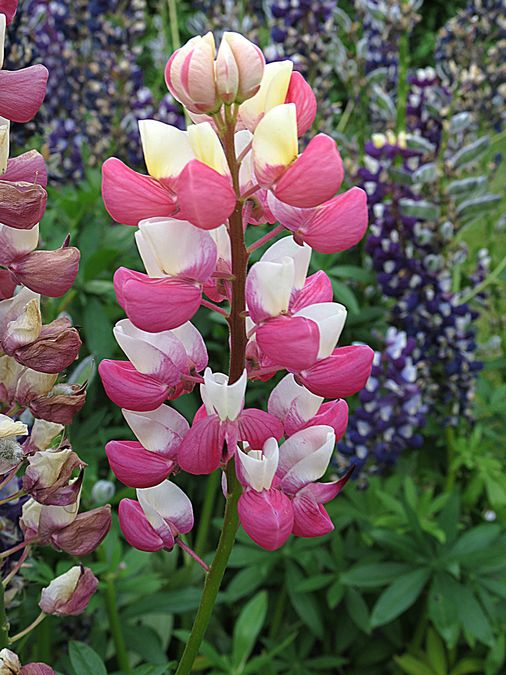
Pink lupine
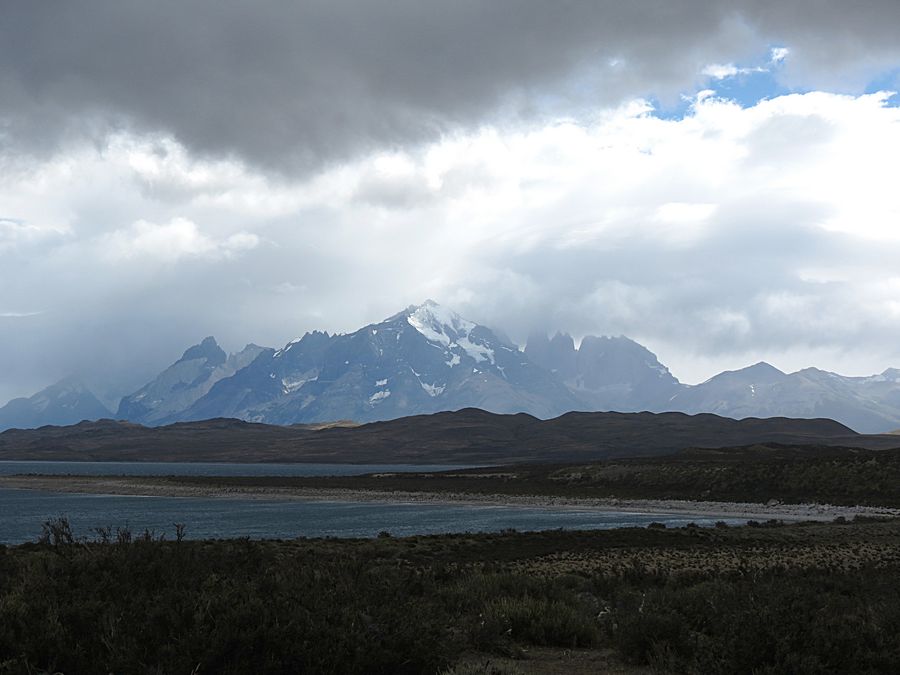
Overcast skies over Torres del Paine N.P. and Sarmiento Lake
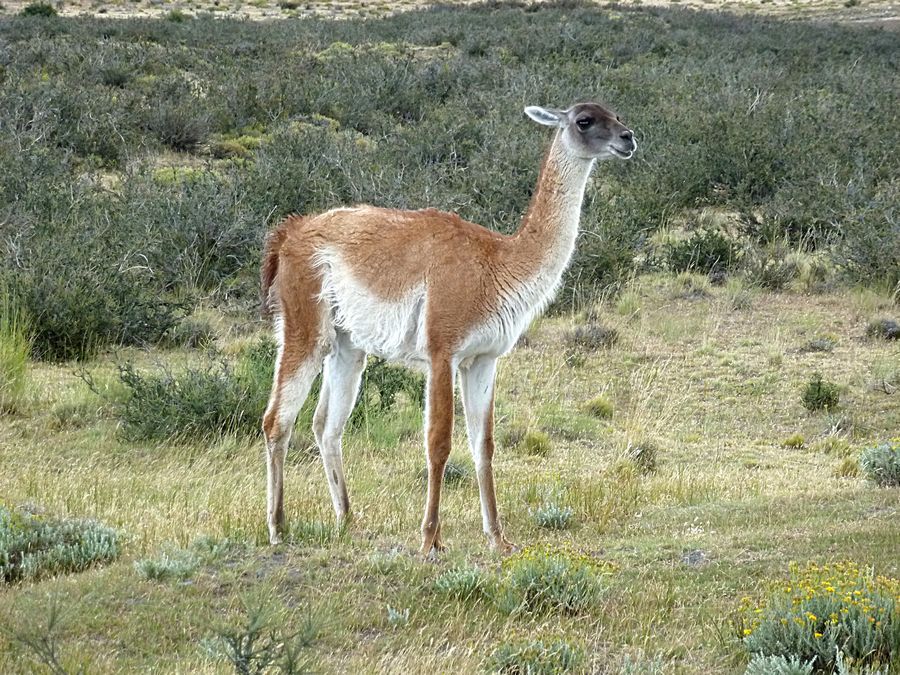
Guanaco - The guanaco is a vulnerable animal native to the arid, mountainous
regions of South America. A guanaco’s typical lifespan is 20 to 25 years.
Guanaco live in herds composed of females, their young and a dominant male.
Bachelor males form a separate herd. While female groups tend to remain small,
often containing no more than ten adults, bachelor herds may contain as many as 50 males.
When they feel threatened, guanaco alert the herd to flee with a high-pitched
bleating call.
The male will usually run behind the herd to defend them.
They can run with a speed of 35 miles per hour. Guanacos are one of the largest
wild mammal
species found in South America. They have one natural predator,
the puma. Guanacos will often spit when threatened. To protect its neck
from harm, the guanaco has developed thicker skin on its neck.
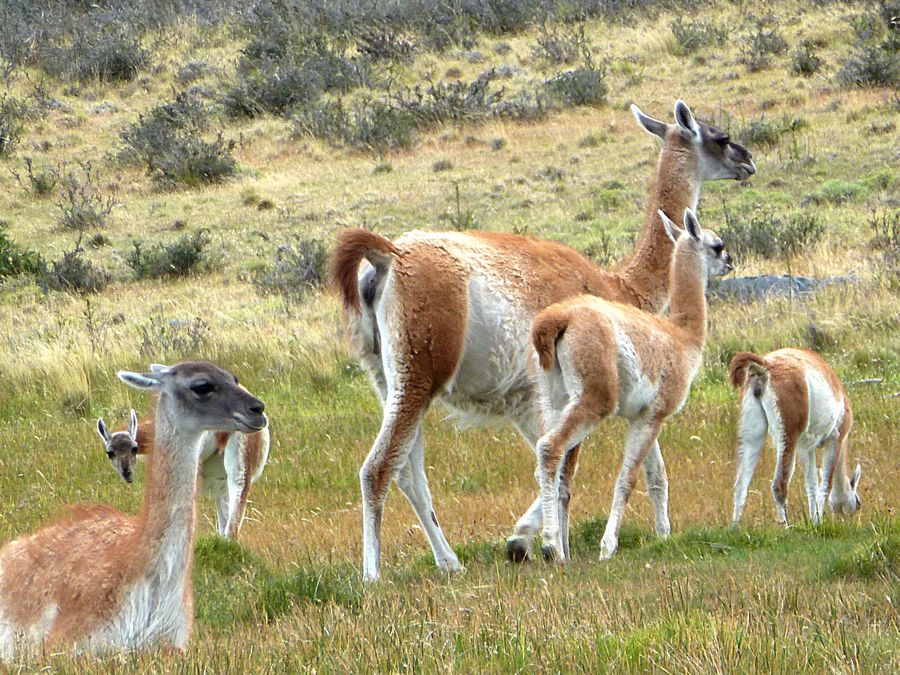
Guanacos stand between 3 ft 3 in and 3 ft 10 in at the shoulder and weigh about 200 lbs.
The color varies very little, ranging from a light brown to dark
cinnamon
and shading to white underneath. Guanacos have grey faces and small straight ears.
The name guanaco comes from the South American language
Quechua word wanaku.
Young guanacos are called chulengos. Mating season occurs between November and February,
during which males
often fight violently to establish dominance and breeding rights.
Eleven-and-a-half months later, a single chulengo is born.
Chulengos are able
to walk immediately after birth. Male chulengos are chased off from the herd
at approximately one year of age.
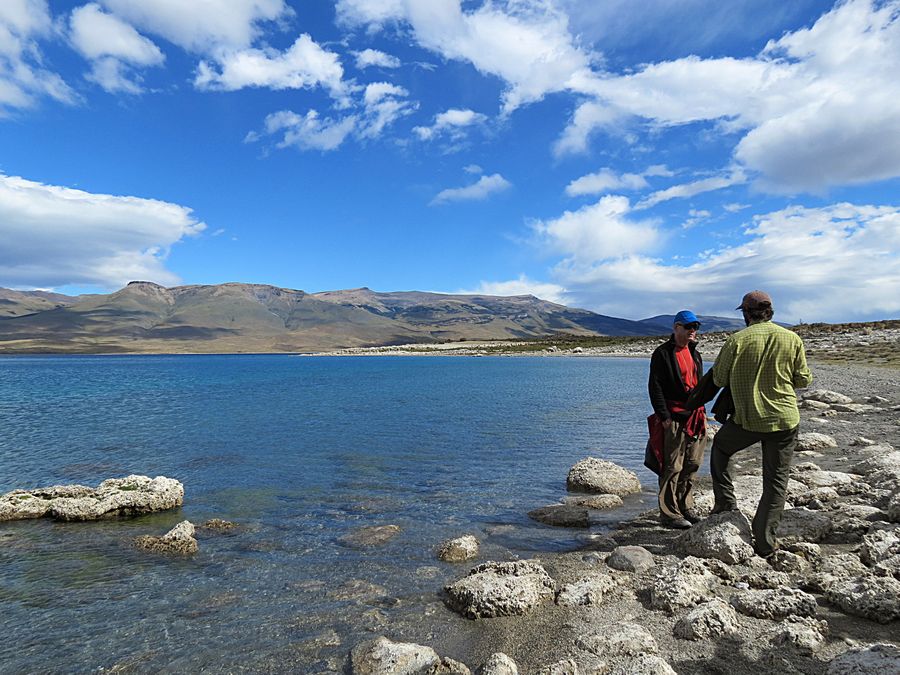
Jeff talking to local Chilean guide Tomas at Sarmiento Lake as the earlier ominous clouds dissipated.
The lake is a closed basin elliptical lake with 47 miles of shoreline. The lake is edged
by the Torres del Paine National Park on one side and the great Pampas on the other.
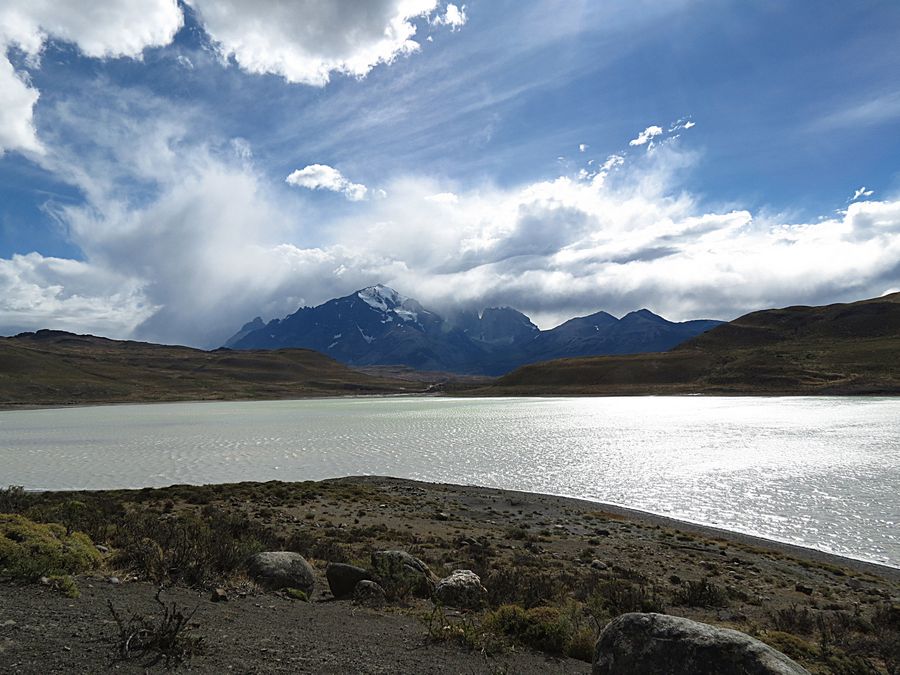
The Towers of Paine are hidden in clouds in the background.
Amarga Lagoon is in the foreground. Like Sarmiento Lake, the
Amarga Lagoon is enclosed by glacial moraines and has inflow but no outlet.
The water has to evaporate.
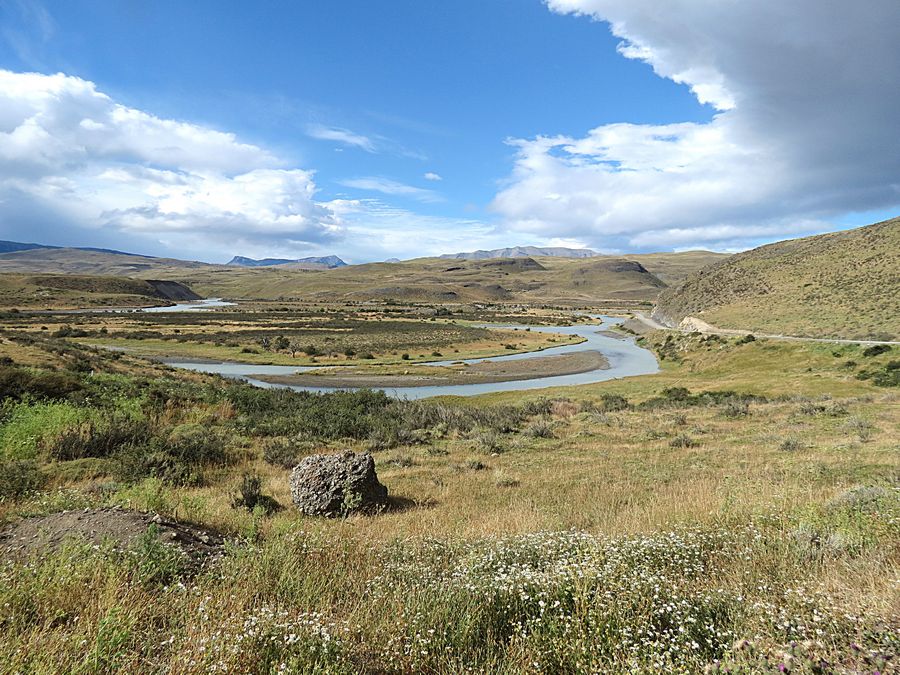
View from entrance to Torres del Paine National Park, looking back at the road that we had been on.
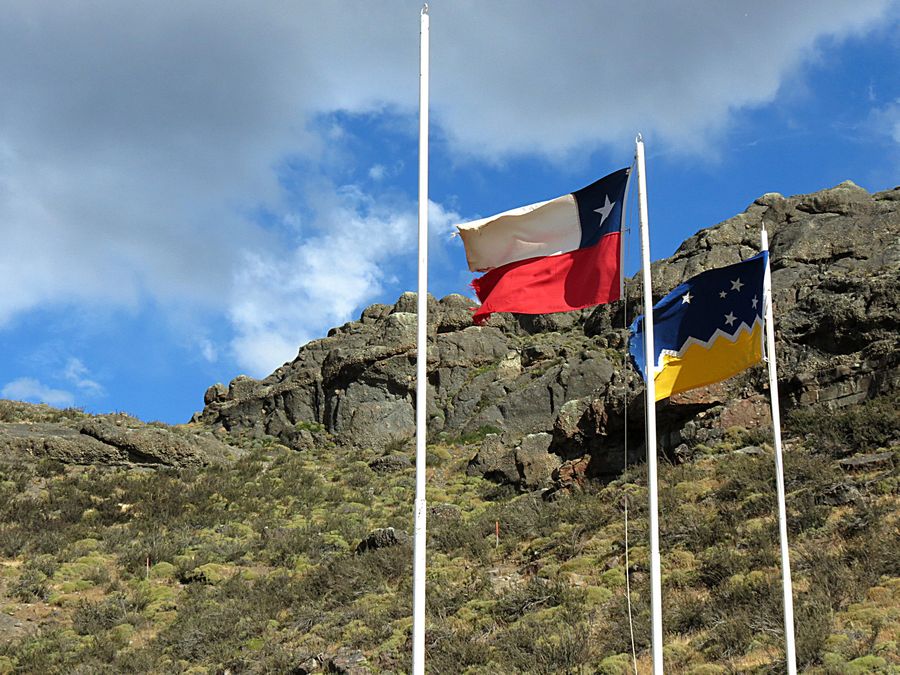
The national flag of Chile (red and white stripes with one star) and the flag of Patagonia,
a regional flag called the Magallanes flag.
The flag is very popular
with the people of this area, but probably is more a representation
of regional pride
rather than a symbol of regionalist separatism.
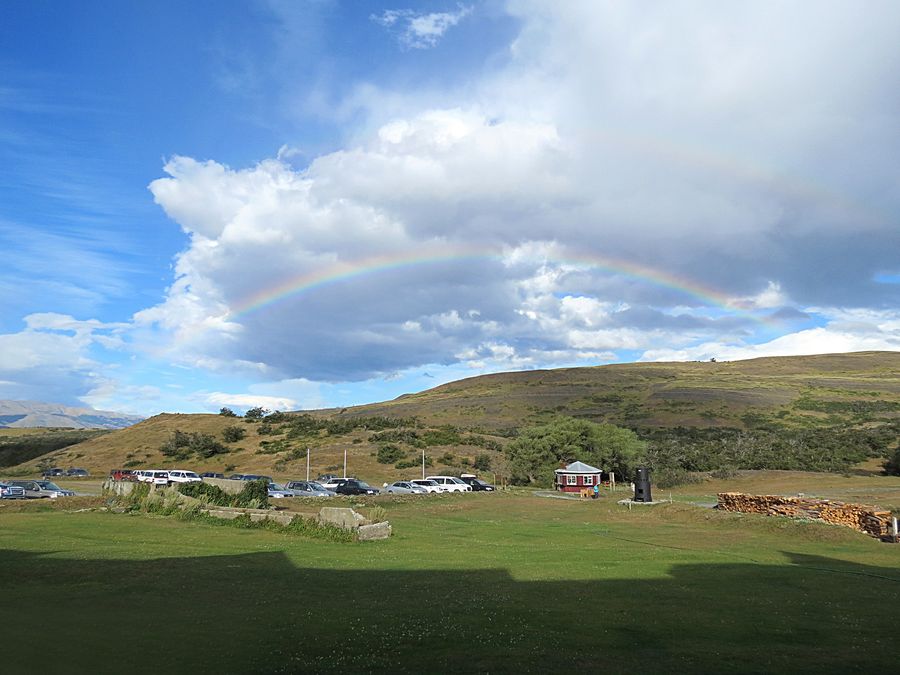
A rainbow as seen from our room at Hosteria Las Torres at Torres del Paine National Park
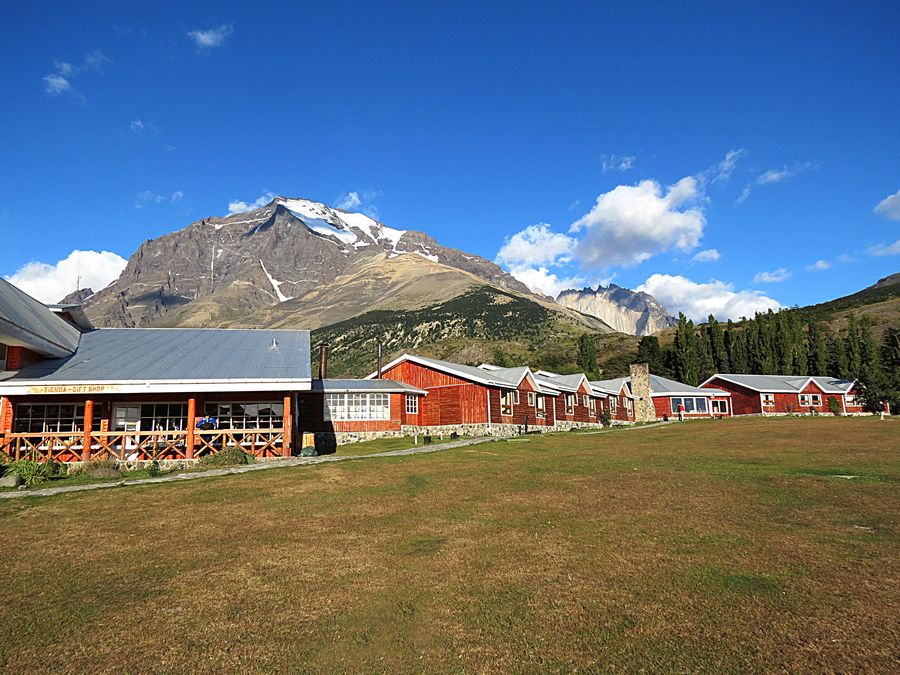
Hosteria Las Torres with Almirante Nieto above and behind it
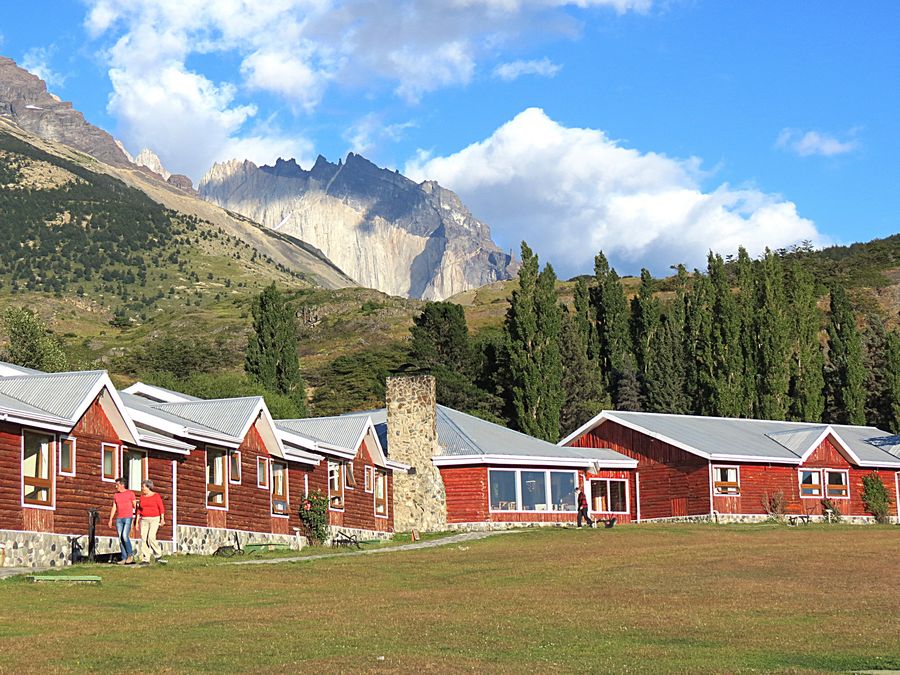
Nido de Condor in the background with part of the Towers of Paine barely showing to the left
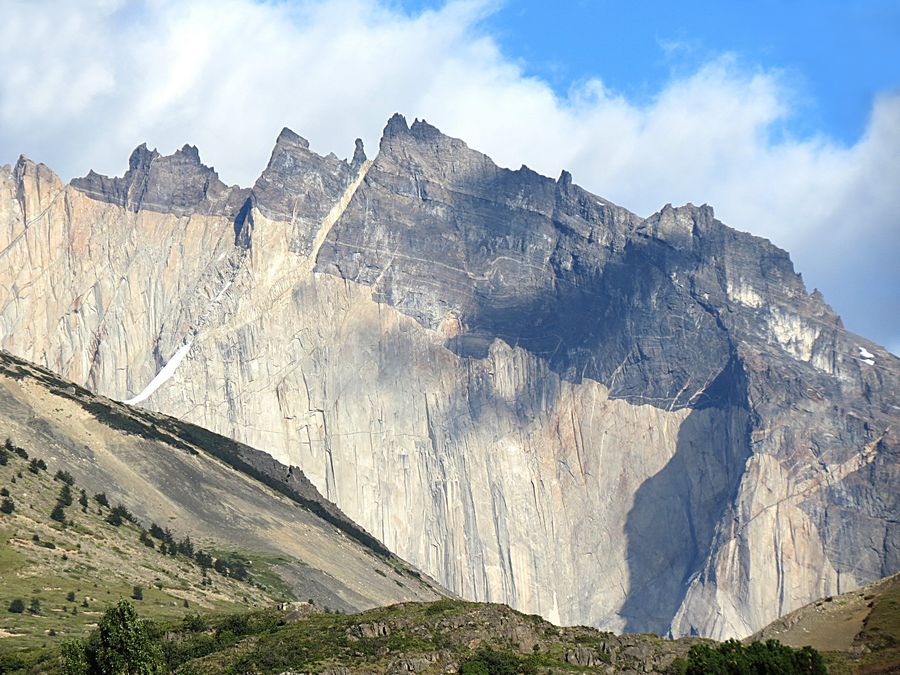
Cerro Nido de Condor
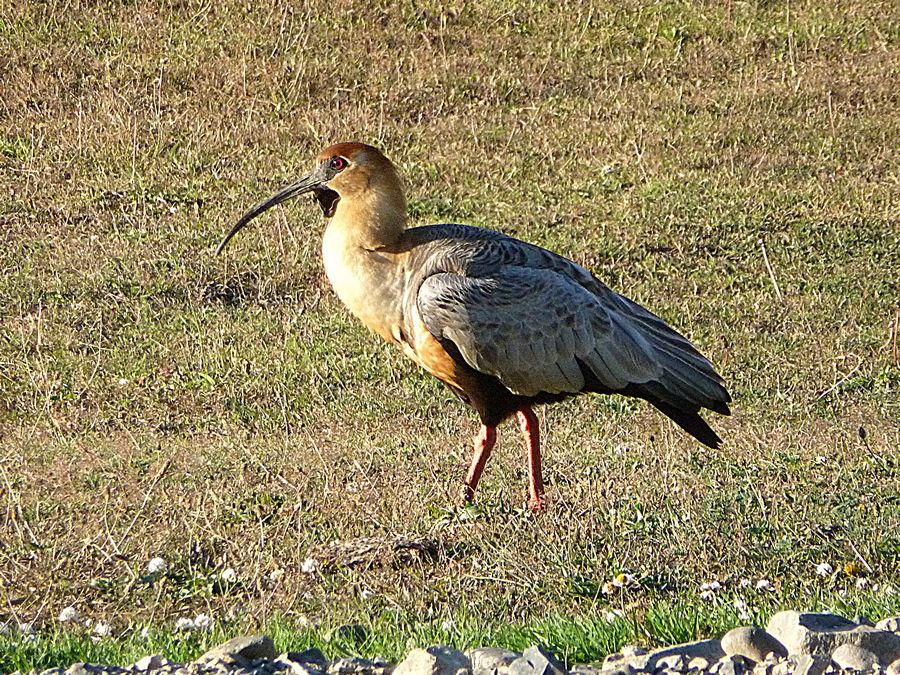
Bandurria Austral or Black-faced Ibis wandering in the grassland surrounding the Hosteria
Link to Page Four - Hiking to Torres del Paine
Pat's Home Page